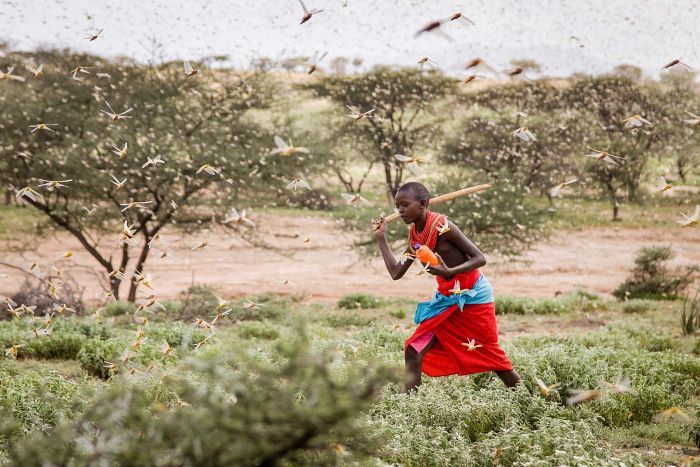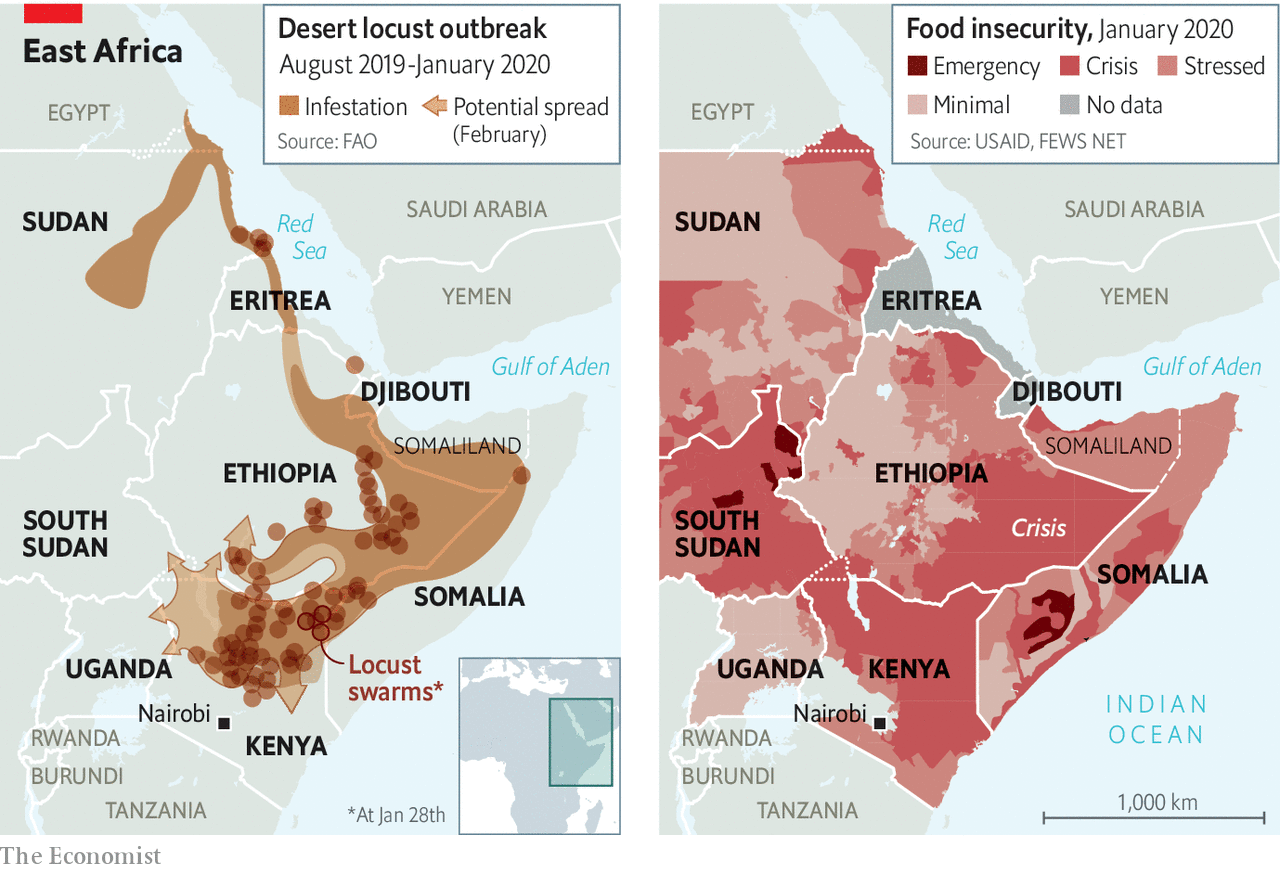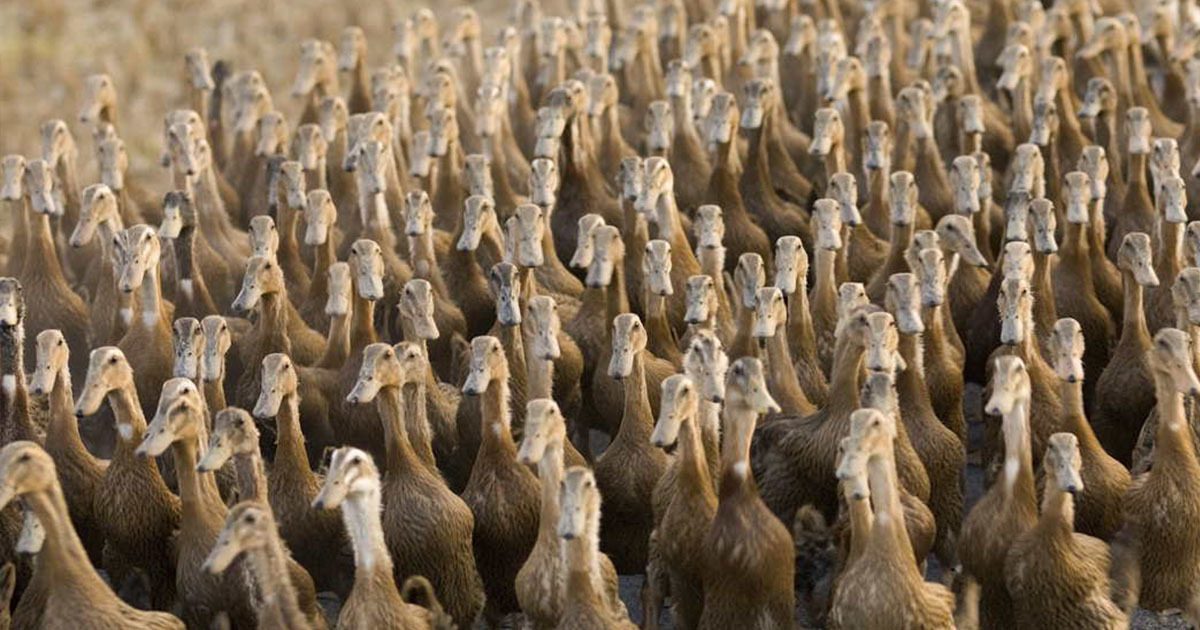Landscape Ecology: Locust Infestation across East Africa and the Middle East
In many ways, an environmental crisis is a design crisis. In parts of the world where humans dominate, ecological landscape design has a crucial role to play in addressing design problems and providing solutions by modelling ecological processes and functions.

A confluence of unusual weather and climate conditions have helped stoked the plague of locusts spreading across East Africa and the Middle East. Food supply is threatened as city-sized swarms descend on crops and pastures, devouring everything in a matter of hours. Desert locusts (Schistocerca gregaria) are generally positive ecological indicators of the ecosystem’s qualities and the efficacy of an ecological network. But when populations grow to catastrophic proportions, they end up being every agriculturalist’s worst nightmare. The desert locusts thrive after periods of heavy rainfall trigger blooms of vegetation across their usually arid habitats. Able to live for about 3 months, they reproduce successive generations exponentially, increasing their population size by the thousand-fold. This weighs heavily on Africa’s and Pakistan’s economy and the swarms may even migrate eastward into India and China.

While some say the main culprit of the infestations are due to a prolonged wet weather over the area, others say that the root of it all is human activity that has induced irregular ocean circulation pattern and triggered a peculiar confluence of events.
In the line of our work, landscape architects aim to implement nature-based solutions to site-specific problems such as flooding or circulation. We use landscape ecology to contribute towards a holistic approach in our design, which is environmentally sustainable as well as culturally and aesthetically appropriate.

One such ecological solution was explored, where a troop of 100,000 Chinese ducks was speculated to be deployed into Pakistan as “biological weapons”. A duck can eat about 200 locusts a day, rendering this biological approach more effective than the chemical approach of using pesticides. However, it was finally decided against since the ducks are reliant on water and would not be suited to Pakistan’s desert conditions. Potential introductions of a new species may also have mixed success. Ultimately, the use of chemical or biological pesticides was advised.
Where possible, landscape architects should emphasise the actual and potential radical nature of an ecological approach. Although locust plagues are not new, this 1-in-25 years outbreak can establish updated field data that can inform the design process at local and regional levels. In view of this,
- What are some preventative design strategies that can be applied to better control the frequency and size of the locust outbreak?
- Could landscape architects design for agricultural land to be plague-resistant so that the local and regional community can suffer less from severe crop losses?
In many ways, an environmental crisis is a design crisis. Design is a hinge that inevitably connects culture and nature through exchanges of materials, flow of energy, and choices of land use. (Van Der Ryn and Cowan, 1996) In parts of the world where humans dominate, ecological landscape design has a crucial role to play in addressing design problems and providing solutions by modelling ecological processes and functions.

